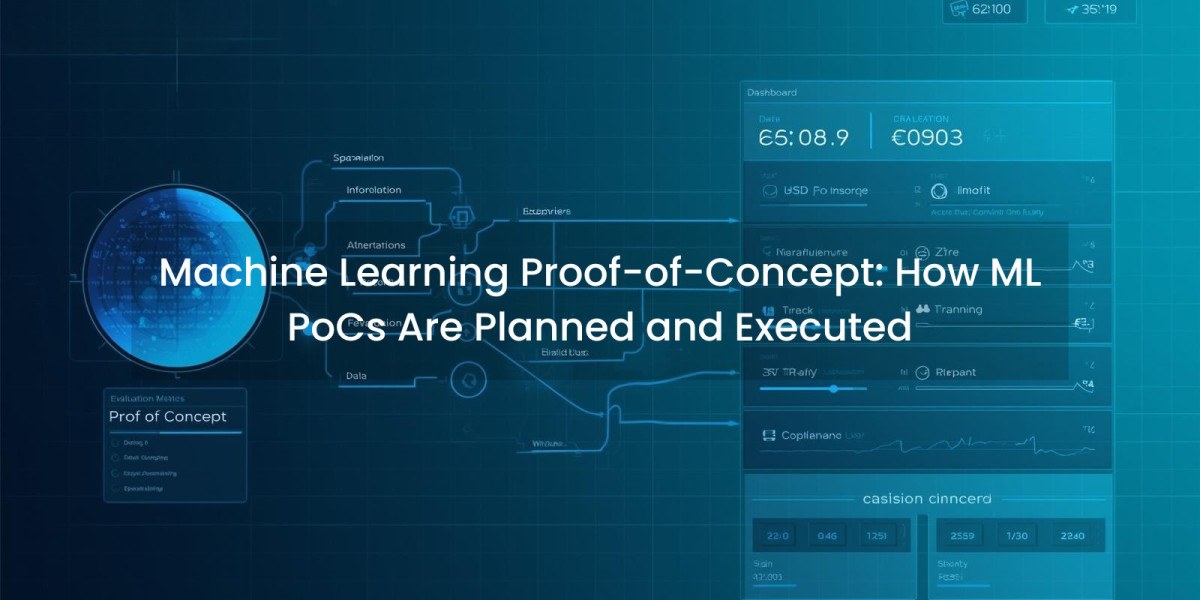Machine learning (ML) is transforming industries across the globe, but implementing ML solutions in real-world applications can be a complex and high-risk process. That's where a Machine Learning Proof of Concept (PoC) comes in. PoCs help businesses test the feasibility of ML solutions on a smaller scale before committing to full implementation. In this article, we’ll explore the critical aspects of planning and executing an ML PoC, ensuring that organizations can make informed decisions and minimize risks.
What Is a Machine Learning PoC?
A machine learning PoC is a small-scale, experimental project that evaluates the viability of an ML solution within a specific business problem. The goal of a PoC is not to build a production-ready system but to prove that the ML approach can achieve the desired outcomes, such as improving efficiency, decision-making, or predictive accuracy.
Steps for Planning a Machine Learning PoC
Define the Business Problem
The first step in any PoC is to define the problem you're trying to solve. Whether it’s enhancing customer experience, improving supply chain logistics, or optimizing marketing campaigns, the problem should be specific and measurable. A well-defined problem helps in designing an effective PoC and sets clear expectations from the start.
Gather Data
Data is the foundation of any machine learning model. For a successful PoC, you'll need relevant, high-quality data that reflects the problem you're trying to solve. It's crucial to understand data requirements, accessibility, and any preprocessing steps needed.
Choose the Right ML Algorithm
Depending on the nature of the problem, different machine learning algorithms may be used. Whether it’s supervised learning, unsupervised learning, or reinforcement learning, selecting the appropriate algorithm can make or break the PoC's success.
Prototype the Model
Once the data is gathered and the algorithm is chosen, the next step is to build the prototype model. At this stage, it’s essential to focus on creating a simple yet effective model that can demonstrate the concept without necessarily optimizing it for production use.
Evaluate Results and Iterate
The key to a successful ML PoC lies in continuous evaluation. After testing the model on your dataset, measure its performance against predefined KPIs (Key Performance Indicators). If results are unsatisfactory, adjustments in the model, algorithm, or data might be needed.
Scaling and Integration
If the PoC is successful, the next step is to scale the solution for broader application. This involves improving the model, integrating it with existing systems, and ensuring it operates in real-world conditions.
Also Read: How ML Proof-of-Concept Projects Are Planned & Executed
Why Conduct a Machine Learning PoC?
A machine learning PoC helps companies avoid costly mistakes by validating assumptions early in the project. It allows businesses to test ML models on small, manageable datasets, gauge their effectiveness, and determine whether the proposed solution can solve the problem before investing heavily in full-scale development.
Furthermore, conducting a PoC fosters cross-departmental collaboration and provides stakeholders with tangible evidence of ML’s potential value. It’s a way to mitigate risks and ensure that the technology aligns with business goals.
Conclusion
Building and deploying a machine learning model can be daunting, but with a solid proof of concept, businesses can take confident, calculated steps toward integrating AI into their operations. If you're interested in exploring how ML PoCs can be tailored to your specific needs, consider checking out our AI Proof-of-Concept Services to get expert guidance on your next project.







